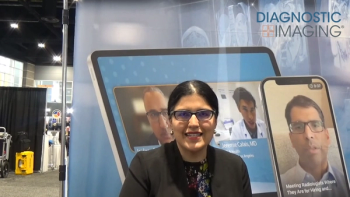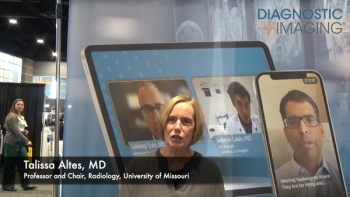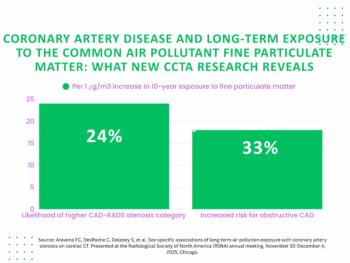
Expert-Level Experience Needed to Diagnose Endometriosis with MRI
Even radiologists with two years’ experience have statistically inferior diagnostic performance.
MRI scans of suspected endometriosis cases should be reviewed by experts in women’s health imaging, new research has revealed. Diagnostic accuracy is lower among all other radiologists interpreting those exams, even those providers with up to two years’ experience.
Endometriosis affects between 6 percent and 10 percent of women who are of reproductive age. Currently, ultrasound is considered to be the first-line modality for assessing the condition, but it does present challenges. It is both operator dependent, and it only provides a limited field-of-view. MRI is frequently a supplemental scan, but little is known about how much experience a radiologist needs to accurately interpret those studies.
A team of investigators from Geneve University Hospital in Switzerland examined provider performance to answer this question, and they published what they found in the Sept. 22
“MRI is increasingly performed as an additional investigation in complex cases and for surgical planning, its importance lying also in overcoming the limitations of ultrasound,” said the team led by Clemence Bruyere, M.D., from the Geneve University Hospital division of radiology. “However, interpretation of pelvic MRI with the clinical question of endometriosis requires specific skill and experience.”
For more coverage based on industry expert insights and research, subscribe to the Diagnostic Imaging e-newsletter here .
MRI scans are typically used to confirm an endometriosis diagnosis, and they also factor into surgical planning – study results can determine whether a colorectal surgeon or urologist should be present during surgery. But, correctly interpreting the images requires a certain level of expertise, the team said. This raises a concern, they added, because most radiology specialization programs include only 3-to-6 months of instruction in female pelvis imaging, and patients are largely referred as outpatients to small peripheral radiology centers where providers do not have sufficient experience.
To determine the differences in provider performance, Bruyere’s team conducted a prospective study to analyze the diagnostic performance of radiologists with varying levels of experience in their interpretations of MRI scans for endometriosis on 59 women. The women were imaged between December 2016 and August 2017, and their scans were interpreted by junior residents (0-to-6 weeks), senior residents (7-to-24 weeks), fellows (6-to-24 months), and an expert (10 years).
The team looked at provider performance around endometriomas, posterior compartment pooled lesions, vaginal invasion, and rectal invasion. According to their analysis, the overall diagnostic performance for all localizations was:
- Expert: 0.893 sensitivity; 0.964 specificity; 0.914 area under the curve
- Fellow: 0.807 sensitivity; 0.927 specificity; 0.849 area under the curve
- Senior resident: 0.731 sensitivity; 0.900 specificity; 0.787 area under the curve
- Junior resident: 0.491 sensitivity; 0.909 specificity; 0.721 area under the curve
While there was no statistically significant difference between the performance from fellows and the expert, senior and junior residents did not perform as well. They misclassified 14 and 18 lesions, respectively.
These results highlight the clear differences in diagnostic accuracy between radiologists at all levels, and they have both clinical and educational implications, the team said. Knowing that veteran radiologists are best equipped to interpret these exams can improve patient care.
“The aim [of our study] was to identify what degree of experience is considered ‘adequate,’” they explained, “so that clinicians could ideally address their patients to the appropriate radiologists.”
In addition, from an educational perspective, the results show that even radiologists who have two years of training are not sufficiently prepared and offer lower diagnostic performance. Consequently, training programs should consider curriculum changes, insisting on augmented instruction around female pelvic imaging, they suggested.
Newsletter
Stay at the forefront of radiology with the Diagnostic Imaging newsletter, delivering the latest news, clinical insights, and imaging advancements for today’s radiologists.




























